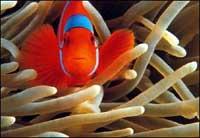There are fewer coral reefs than scientists thought
Scientists have made the Atlas of the first world of coral reefs, and for this it seems that there are much less coral reefs than previously thought. The Atlas took place at the World Conservation Control Centre in Cambridge, which is part of the United Nations Environment Programme and is responsible for the Mark Spalding project.
Recent estimates show that coral reefs occupy an area of approximately 284,300 square kilometers, that is, the joint surface of the United Kingdom and Ireland. In other words, it would be less than 0.1% of the ocean. However, it has been calculated that the surface of coral reefs is between two and ten times higher than that obtained in the latter.
The rest of the reefs have disappeared, according to Mark Spalding. He believes that the calculations carried out to date have produced very gross extrapolations, so the current results do not have much to do with new and more precise results.

However, it is true that coral reefs are disappearing faster than we imagined. Corals are subjected to continuous risks, including human action.
It is estimated that human activity has endangered about 58% of reefs. In addition, we cannot keep track of the missing ones so far.
Human activity has several aspects. On the one hand, there is uncontrolled tourism. On the other hand, nutrient-rich wastewater and fertilizers that are poured into the sea cause algae growth, which gradually drown the corals.
Climatic changes must also be taken into account, as coral reefs are very sensitive to temperature changes. In 1998, for example, the climatological episode of El Niño caused an increase in water temperature of between 1 and 2 degrees, destroying about 90% of the central corals of the Indian Ocean.
Buletina
Bidali zure helbide elektronikoa eta jaso asteroko buletina zure sarrera-ontzian











